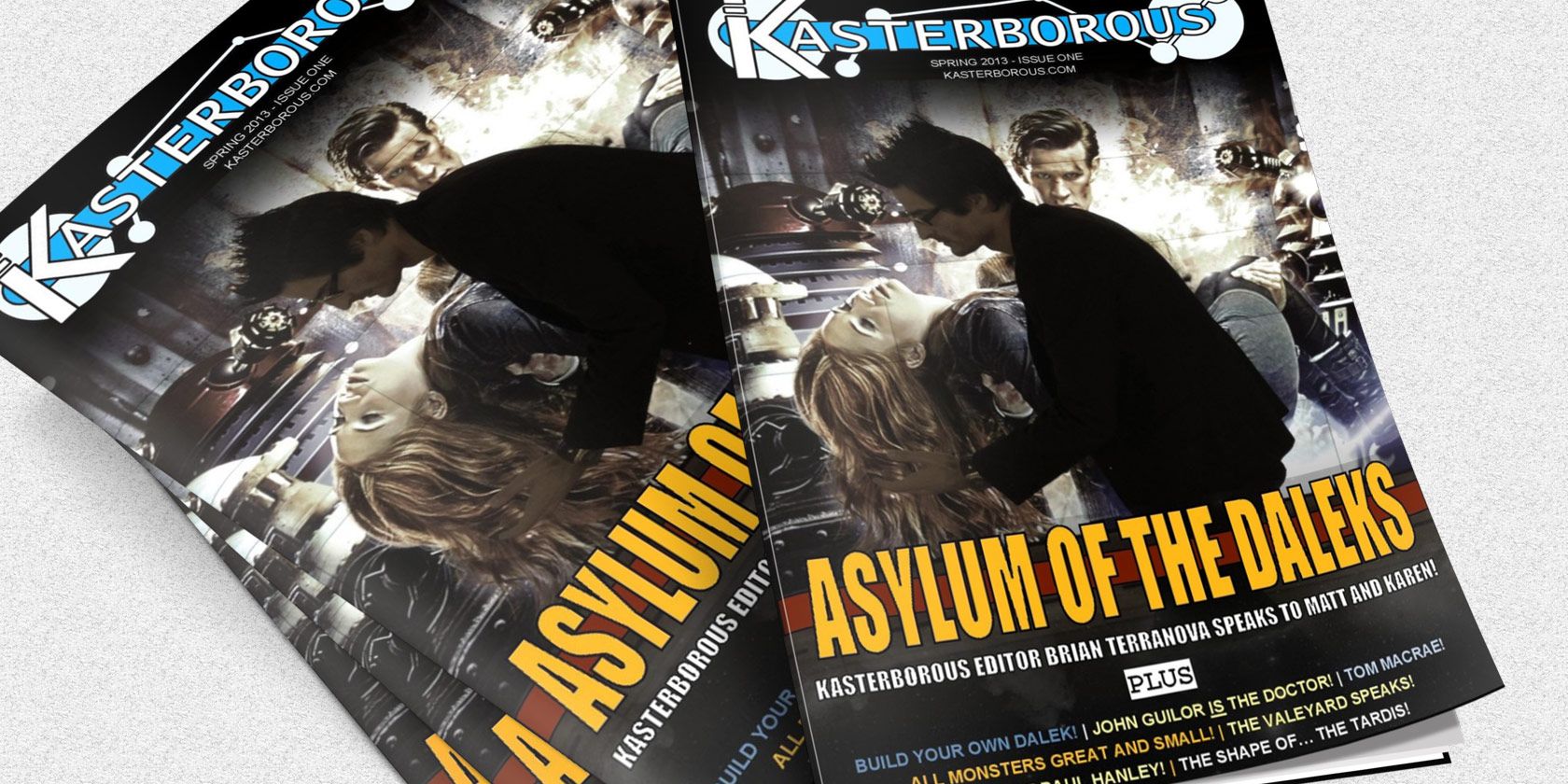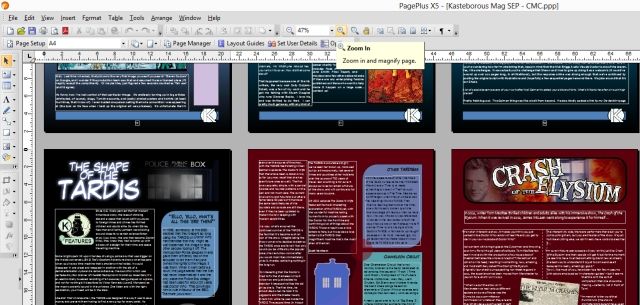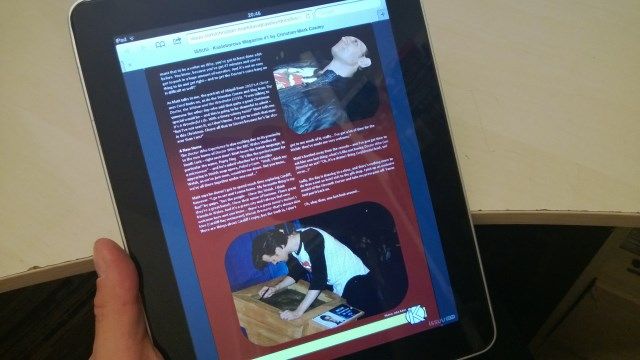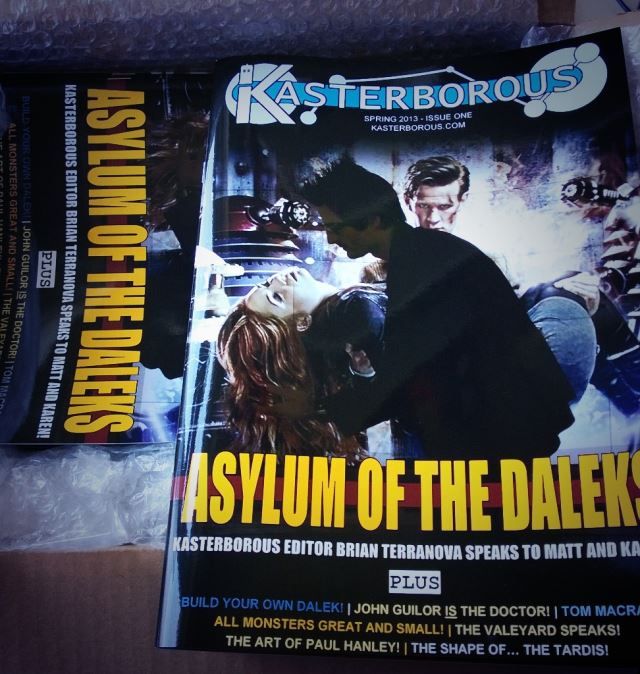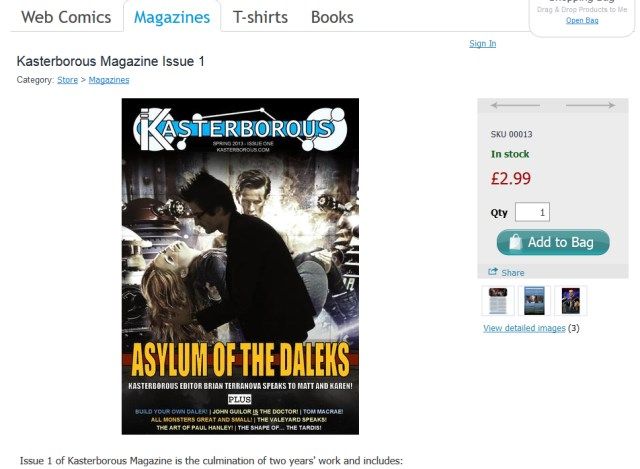In August 2013 I reached the end of a project that had its origins over two and a half years earlier in a pub in Manchester, England. I finally self-published my magazine online, but how did I manage it? What tools did I use, and what did I learn?
Why I Launched My Magazine
I’ve been running my website Kasterborous.com since 2005, reporting on the latest news, providing reviews, interviews, and feature articles on the popular British TV show Doctor Who. We’ve also got a "podKast", released a book of reviews (Ultimate Regeneration, the basis for my recent MakeUseOf guide Your Guide to Self-Publishing: From Print to Kindle and Beyond), feature prominently in a popular iOS app, and even run a trio of original comic strips based on the show.
Doctor Who has a rich history of fanzines dating back to the 1970s, but I decided that given the slim opportunities to write for either of the official magazines (one of which is the biggest selling sci-fi monthly in the world) I would throw the gates open to any capable writer and invite pitches.
The resulting articles were enough to fill a couple of editions, so I knew we were on the right path…
Developing The Philosophy
Kasterborous has been running since 2005 and in the past two or so years has become a highly respected source for Doctor Who news, balanced reviews, features, and interesting reviews. So much so that we were able to leverage contacts and invitations in order to provide content for the first edition. We were able to interview the series star Matt Smith not once, but twice, as well as speak to writers, voice artists, and illustrators with connections to the show.
We also knew early on that we had to make sure that the magazine had an underlying philosophy, something that would drive the content and provide a bed to fall back on. While other Doctor Who publications – official and amateur – cater for fans of the TV show (which is fair enough, of course!), we’re making the magazine to reflect fandom. Kasterborous Magazine is a part of the community, reporting back, sharing what various groups are doing. By doing this, we can look at -- and teach our readers about -- such diverse topics as video games, cosplaying, prop building, collecting, etc.
This philosophy has informed the first two issues, and will continue to do so throughout the life of the magazine.
Project Software: Page Plus X5, Skype And Google Drive
After outlining the contents for the magazine and co-opting some outstanding articles originally intended for the website, it was time to start work. The initial plan was to use open source DTP application Scribus. However, my designer (James McLean) had some issues with the application and the learning curve involved with putting together something that would look reasonably acceptable, so instead we turned to Serif Page Plus X5 (Adobe InDesign was not economically practical). We chose this particular version because it did exactly what we needed it to; it was also affordable as it was the last-but-one release when we started work on the magazine.
As the project progressed, we worked closely using Skype for text and voice chats (with the occasional file sharing) and Google Drive, which proved particularly useful as a shared remote library for the documents and assets, from Word documents and stylistic emblems to PDFs and Serif PPP files.
It is important to note here that in all but the rarest circumstances, your first issue will invariably be your worst. Various lessons will become apparent as the magazine is developed, as it is printed and as you receive feedback; it almost certainly cannot be perfect, although you can of course make certain that the finished product matches your vision and internal quality meter as closely as possible.
Determining Which Platforms To Publish On
Perhaps the most difficult aspect of a project such as this is to settle on a platform. Due to initial pre-order sales being weak (so much so that they were refunded while we regrouped and had a rethink) we decided that a print release would have to be published through a print on demand service. For this, I chose Lulu.com, more on which you can find below.
In addition, we decided that there should be a couple of electronic versions. One would be in PDF format, which makes the magazine easy to read on virtually any device. We also wanted it to be available online in a tablet- or touch-friendly format. One of the benefits of this (and to a lesser extent PDF) is that video and audio can be embedded into the electronic release, making it a unique reading experience.
As a result of this, I settled on three formats:
- Online via issuu.com
Each of these was easy to manage once the initial magazine had been compiled (thereby reducing time formatting for multiple platforms) and could be listed within my website’s online store (I use the Ecwid Shopping Cart plugin for WordPress).
Self-Publishing A Magazine In Print
Both digital and print versions of the magazine required a PDF document to be created, but Lulu.com (like any printing company) has formatting requirements that you must meet when uploading to their servers. You also need to provide front and back cover art as a separate file. Using Lulu.com was a no-brainer for me as for the last year or so I’ve been using it to distribute my book, Ultimate Regeneration. However what I didn’t initially realise is that this particular POD company isn't 100% suitable for printing magazines.
While the finished product has a rather stiff – albeit impressive – cover, the inside page can't be printed on. I only found this out by ordering a proof copy, something that is highly recommended as they allow you to look for problems, make the necessary changes and then have them incorporated into a product that is ready for public consumption.
Print on Demand can be expensive, just as short run bulk printing can be too. The best approach is to look out for offers to reduce the outlay, and perhaps take advantage of your website’s readers to arrange a small scale crowdfunding project to get as many pre-orders as possible, which can help to lower the cost more.
Using Digital Formats to Publish a Magazine
As well as print publishing, we also opted for two electronic formats. First and foremost was creating a PDF version of Kasterborous Magazine from within Serif PagePlus. This was relatively simple, and the resulting file could be delivered using the electronic shopping cart software Ecwid. Before proceeding I took the time to read a MakeUseOf guide, Design & Publish Your Own Digital Magazine.
More complicated was using Issuu. One of the things we did as the magazine was developed was to remove content, which we kept to one side for a free "Issue 0" for interested parties to take a look at for zero cost. This was embedded on the website using the finger friendly virtual magazine software provided by Issuu.com. When it came to the first full issue, distribution through Issuu became somewhat problematic, as the platform doesn’t offer a shopping cart – every magazine on it is free. Although there are other digital magazine systems, these were deemed too costly.
The solution was to use the Issuu facility to "lock off" the magazine from the rest of the website, making it accessible only to those with the URL. Using the Ecwid shopping cart software I was then able to automatically email the link to those who paid for access. Reading the magazine on a tablet is an unforgettable experience and the multimedia possibilities have informed our plans for the second issue.
Learning the Lessons: Will You Publish Another Copy?
Although work on the project began in early 2011, it didn’t really get into its stride for another 18 months. After a year of developing layouts, dropping and adding content, and coming to terms with the fact that what was created wasn’t quite what we had originally envisaged, it seemed that we would be able to release more issues in the future. Kasterborous Magazine #1 is now available, directly from www.kasterborous.com/store. We’ve had good feedback and already started work on the second issue, which we expect will be available by the end of 2013.
One key lesson throughout the development was that of theming the layout to match the content, something that we didn't pick up on until late in the project. Similarly, development time on the first issue was slow due to finding an overall look for the magazine. This is time that can be avoided for subsequent editions; at least until a new look is introduced.
Promotion of the magazine was across all possible mediums, utilising social networking with a Kasterborous Magazine group setup on Facebook, mentions on the website’s Facebook Page, Twitter account and of course on the site itself. In addition, conversations on the weekly podKast and occasional news items concerning features in the magazine were complemented by a press release sent to other Doctor Who websites.
If the chance came to start over as if none of this had happened, however, I think that a different approach would have been taken with some of the contents and promotion. As a life lesson, it was certainly worth it, and as the magazine has paid for itself and generated a few quid for the contributors (as well as a free copy!) I think that it can be described as a success, despite the modest sales.

